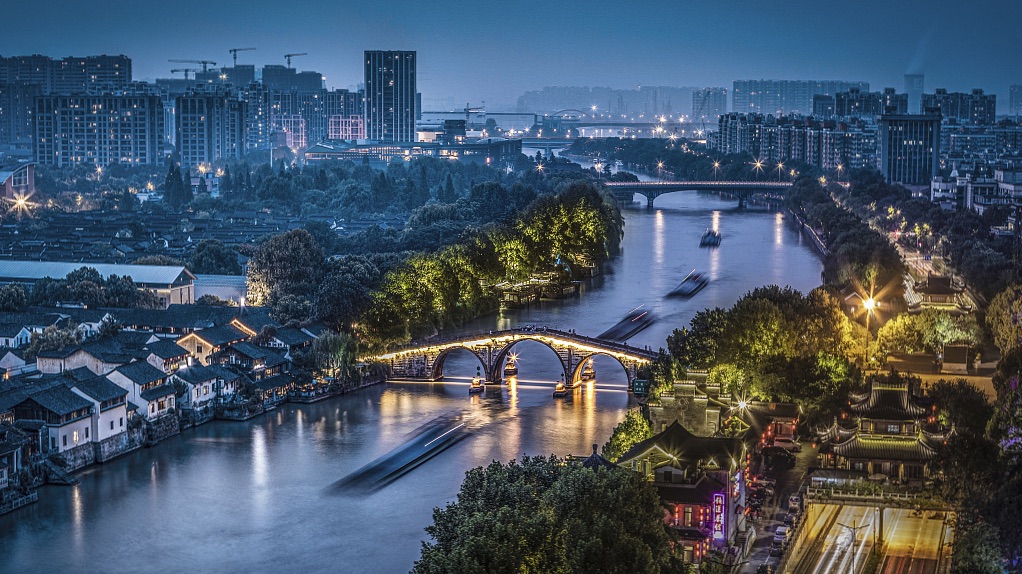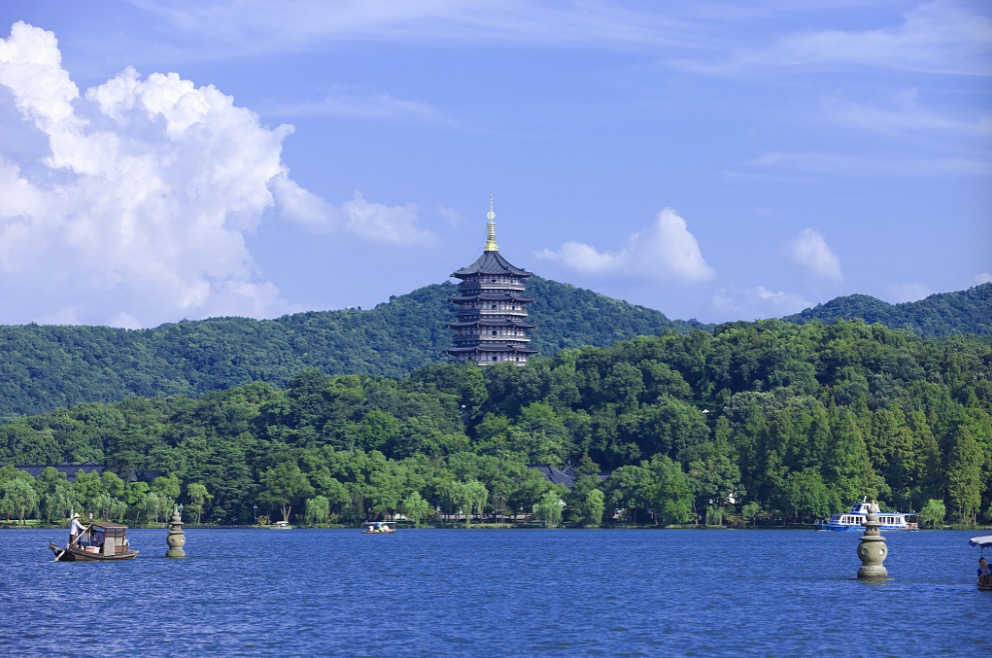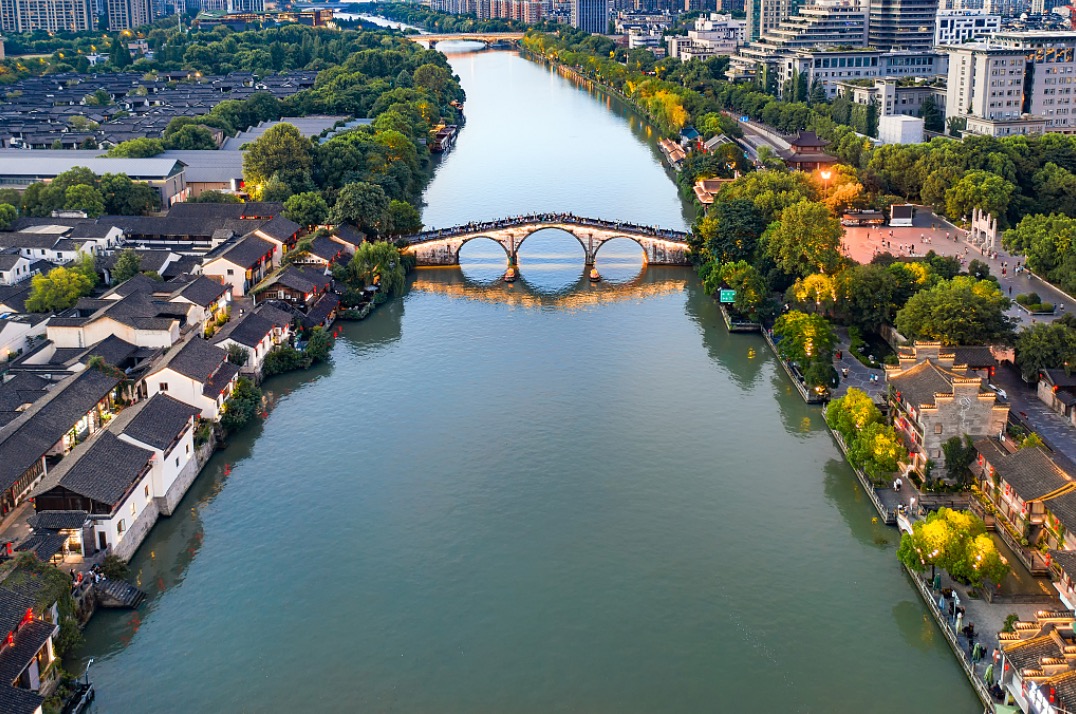07:32

Editor's note: Bronze holds a special meaning in Chinese culture. The Bronze Age, which started around 1700 BC, had a profound influence on the development of civilization in the nation. In our special four-part series, CGTN will follow one of China's most celebrated bronze art masters, Zhu Bingren. His innovative ideas have helped bring new vitality to this ancient craft. In the fourth episode, we see how the artist pushed to get the Grand Canal added to UNESCO's World Heritage List and helped to ensure dying handicrafts were granted a new lease on life.
The West Lake and the Grand Canal are the most famous scenic spots in Hangzhou, Zhejiang Province. They also both rank on UNESCO's World Heritage List.

A file photo showing the West Lake in Hangzhou, east China's Zhejiang Province. /CFP
A file photo showing the West Lake in Hangzhou, east China's Zhejiang Province. /CFP
The West Lake is cherished for its picturesque scenery and historical relics. It has inspired many famous poets, scholars, landscape designers and artists in China.
Weaving its way southward from Beijing to Hangzhou, the Grand Canal is the oldest and longest man-made canal in the world, with a history of over 2,500 years.
Zhu Bingren, a famous bronze arts master, has designed and built many bronze wonders for this beautiful city, such as exquisite decorations at the Lingyin Temple near the West Lake. But he wants to do more, especially for the city's iconic spots.
Every year, Zhu will find time to visit the Grand Canal, keeping a close eye on the changes taking place there while ambling along the banks of the Yangzhou, Hangzhou and Beijing sections. He said he always felt a special connection to this famous waterway and a sense of responsibility that he should play a part in reviving its ancient glory.
In 2005, Zhu met Luo Zhewen, an expert in cultural relics, and Zheng Xiaoxie, who specializes in ancient architecture, in Hangzhou. They expressed their determination to help conserve the glory of the Grand Canal in the hope that more Chinese people would learn about its storied history through their efforts.
With an average age of 79, the three veterans unanimously agreed that the protection and inheritance of the Grand Canal were of the utmost importance. Together, they drafted an open letter expressing the urgency and importance of protecting the cultural heritage of the Grand Canal, which served as a prologue for the application to have the canal join UNESCO's World Heritage List.

A file photo showing the Hangzhou section of the Grand Canal that was added to UNESCO's World Heritage List in 2014. /CFP
A file photo showing the Hangzhou section of the Grand Canal that was added to UNESCO's World Heritage List in 2014. /CFP
The year following their letter, and under the guidance of the National Cultural Heritage Administration, a special campaign to examine the Grand Canal's resources was initiated, uniting 35 cities along its route.
Hoping to make his own contribution to the application process, Zhu turned to his forte and poured his passion and knowledge about the Grand Canal into a large-scale bronze mural.

A part of Zhu Bingren's artwork for the Grand Canal. /CGTN
A part of Zhu Bingren's artwork for the Grand Canal. /CGTN
Zhu saw his efforts bear fruition when the Grand Canal was officially inscribed on UNESCO's World Heritage List in 2014.
For Zhu, an artisan's mission is about more than just inheriting and preserving tradition. It also involves innovating and thinking about what benefits old traditions can bestow on modern society. And he is putting that into practice by helping traditional handicrafts that are at risk of fading away find a new lease on life.
Throughout his prolific career, Zhu has built numerous bronze bridges, leaving in his wake cultural symbols for the world to marvel at. But he is also building invisible cultural bridges based on his determination to preserve and promote traditional cultural legacies, and his spirit will continue to inspire generations to come.

